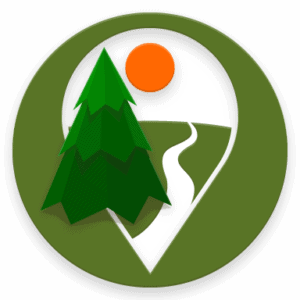Scouts
Cardinal points
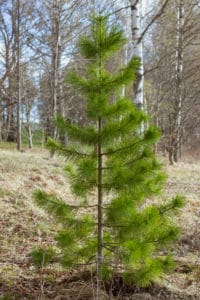
Find the cardinal points without a compass
You can identify the cardinal points in nature also without a compass or a mobile phone. In all of the following images, south is on the right and north is on the left. When looking at trees, south is always on the side with the biggest amount of branches. Branches reach towards the light.
Told by an anthill
South is always on the gently sloping side of an anthill. There is often a tree or a rock on the northern side of the anthill, protecting it from the cold.
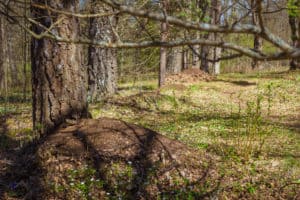
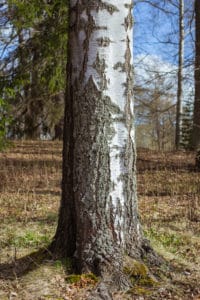
Lichen on the icy side
North is always on the side of the birch, where lichen grows highest. Lichen prefers the dampest, coldest and darkest side of the tree.
This is how to carve with a knife
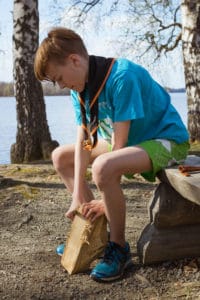
A knife is a hiker’s best friend
A knife is the most important tool for hikers. With a knife, you can carve thin strips of wood for kindling, build an emergency dwelling, slice food, gut fish and open packaging. When carving wood, always make the cut away from your body. Check that your fingers are not in the direction of the cut. When cutting thin strips of wood for starting a fire, always cut along the grain of the wood, in the direction of the “stripes”. You should not cut across the grain, but use a saw for cutting the wood in two.
Be careful not to cut your hands!
Never cut towards yourself. If the knife slips, you can cut yourself or your clothes.
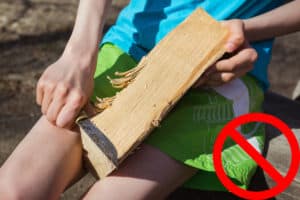
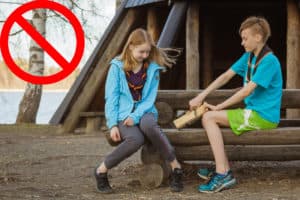
Consider your friends
Never carve with a knife in the direction of your friend. If the knife slips, your friend will hold a grudge for a long time.
Knife safety
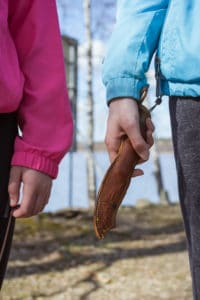
A knife is not a toy
A knife must be used safely, and it must also be carried securely. Always keep your knife sharp. If you cut with a blunt knife, you have to use more strength, which makes it easier for the knife to slip. In addition, a dull knife makes an ugly scar. If you are carrying a knife, keep it in the sheath. Do not walk or run with the blade exposed.
Pass it over!
If you hand your knife to your friend, always pass it with the handle first. Hold on to the blunt side of the blade. Do not wrap your fingers around the blade. If your friend passes a knife to you, do not jerk it quickly from his / her hand. Take it in your hand slowly and calmly. This way, neither of you will be cut.
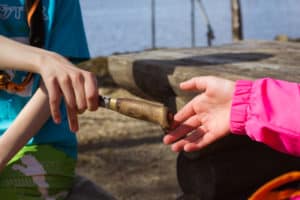
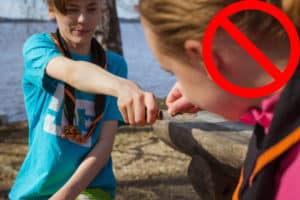
Be safe with the blade
Never hand a knife to a friend with the blade pointing at him / her. Otherwise there is a high risk of injury. The blade also needs protection. Never strike a knife into anything, because the blade may break. A knife is not a weapon for striking, but a tool for working quietly, such as carving and cutting.
Starting a fire
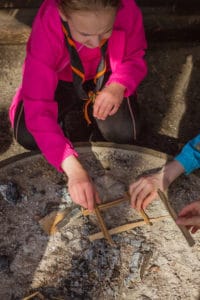
Make a hashtag campfire
The easiest way to light a fire is to make a campfire in the shape of a hashtag. Make a square out of small sticks, so that the ends cross like in a small log house. Place the kindling inside the square, such as birch bark, thin strips of wood, or newsprint. Finally, push a match underneath the centre of the pile.
Use small sticks
Big firewood does not ignite very easily. Instead, small sticks burn quickly, because they contain more surface area for burning. Make a campfire using small sticks and add bigger firewood later. Put the smallest and driest bits of tinder in the middle.
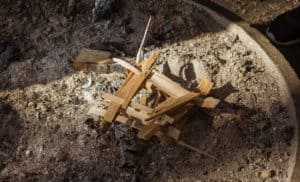
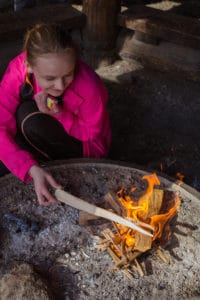
Add wood in moderation
When the campfire is lit, do not add a huge log on the fire. Otherwise, the fire will go out immediately. Feed the fire in moderation by adding slightly bigger wood. Keep in mind that, in most cases, giant flames mean that you are wasting wood. It is pointless to sit by a large fire and far away from it, when you can sit close to a small fire. In the past, this information was important, because a campfire could reveal the location of a camp to the enemy. Therefore, the fire was kept as small as possible.
Storing matches
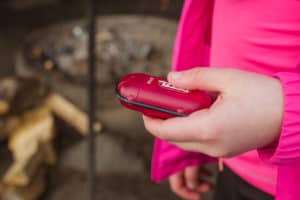
Your matches hate water
When you are out and about, store your matches in a waterproof container. Plastic medicine and pill containers, for instance, make good and sealed containers free of charge, as well as old-fashioned film canisters. In the photo, matches are stored in an old headlamp container.
Remember to include a striking surface!
If a match box does not fit in the container as a whole, cut the box into pieces and include just the matches and a striking surface. In the photo, the whole match box just and just fits into the waterproof container, but for practical reasons, the front of the box has been opened.
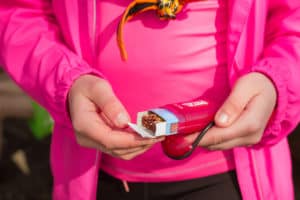
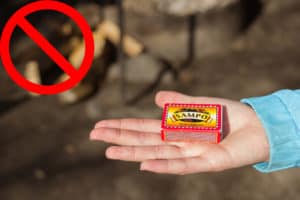
Safe hiking
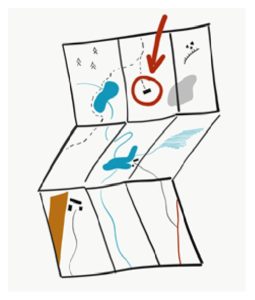
Always tell someone where you are going and when you will be back.
Whether you’re hiking alone or with a friend, let your family or a friend know where you are going to, and when you will return. Otherwise, no one can expect you back at the right time. If you are not back by the agreed time, the others will know that they have to search for you, or even alert rescue professionals. This practice is particularly important when hiking alone, but it should also be followed when hiking in a larger group.
Learn to use a compass
A compass is better than a mobile phone, as it does not run out of battery, or go out in sub-zero temperatures, or when it is raining. Even if you do not know how to take a bearing on a map, it is worth learning the cardinal points. Whenever you go hiking, you need to know whether the nearest road is in the north or perhaps in the south east. If there is an emergency or if you are lost, a compass can tell you the direction where you can find help.
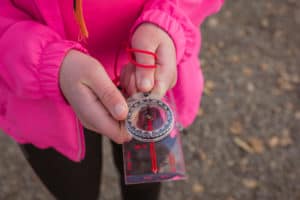
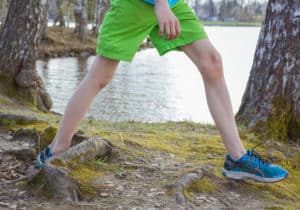
Look where you are walking
If a hiker only admires the scenery, s/he easily trips over. Make sure you wear sturdy shoes. Always consider where you position your foot. In most cases, falls are caused by the back foot being stuck in a root or a branch. Then the injury is also more serious, because the body weight is already moving in the direction of the fall..
Hike with a friend
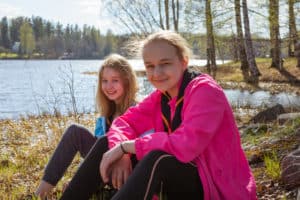
It is better to hike with a friend than alone
It is always safer to hike with a friend. If something happens to either one, the hiking partner can help. Sometimes even a tiny thing, such as a splinter in a finger, requires a friend for help. You cannot always bend your arm in a way to remove the splinter yourself.
Food helps everything
If you become distressed when hiking or have a disagreement, help is usually near: stop and eat something. Blood sugar levels fall easily when hiking in the open air, and negative feelings surface. In most cases, the situation can be resolved by having a break, and drinking and eating something, such as a package of raisins, or a chocolate bar. Always have a couple of quick snacks in your pocket when you go hiking. While eating, you can chat about the trail options or discuss the next course of action. Good decisions are never made on the road.
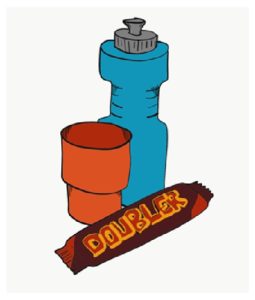
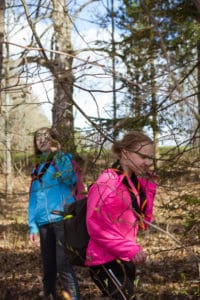
Take into account your hiking buddy
You should always proceed at the pace of the slowest hiker. Therefore, if you have a top athlete in the group, s/he should not determine the pace. The best way is to place the slowest hiker in the front and the fastest one last. This way, your group will not be separated. When walking in a forest, be careful not
to walk into a branch and poke your eye. The one walking in the front should not let the branches snap back and hit the person behind, and the person at the back should keep a small distance to the one ahead.
Take nature into consideration
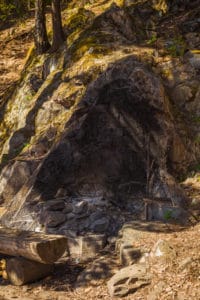
Trash is dangerous for animals
Litter looks ugly on the ground, and in addition, it is dangerous for animals. If you leave trash on the ground, forest animals think it is food. In the worst case, the plastic suffocates the animal. Plastic does not decompose, and its correct place is in plastic recycling. You can also burn plastic used in food packaging, as long as there is a lot of firewood and the fire burns well.
Pack your food in plastic boxes
Almost all food packages acquired from the store are trash: when they are opened, they can no longer be closed. Open the packages already at home and sort the waste to plastic and metal recycling. Move all the sweets, nuts, sausages, canned meat and other delicacies to light and sealed plastic boxes. If there is food left over, you can take everything back home, and there will not be any rubbish left in nature.
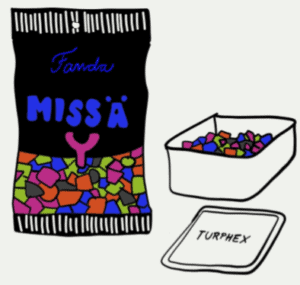
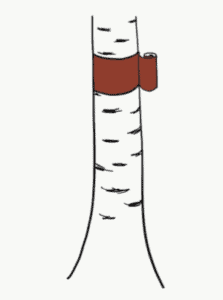
Bring the kindling from home or a collect it from the forest
At almost all of Finnish campfire sites, you can see birches turned brown because their bark has been peeled off. Ignorant hikers pull bark off growing birch trees. Of course, kindling is needed for starting a campfire, but it must be brought from home, carved from firewood at the campfire site, or collected from the ground.
Kindling found at home
– thin newsprint
– bark peeled from your own firewood
– firelighters
– a drop of lighter fluid in, for example, a sealed medicine container
Kindling collected from the ground
– dry autumn leaves
– fallen and dry branches (especially from under spruce trees)


